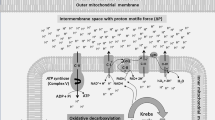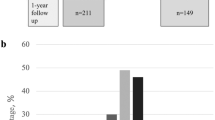Abstract
Depression is the most prevalent functional psychiatric disorder in late life. The problem of motor disorders associated with antidepressant use is relevant in the elderly. Elderly people are physically more frail and more likely to be suffering from physical illness, and any drug given may exacerbate pre-existing diseases, or interact with other drug treatments being administered for physical conditions. Antidepressants have been reported to induce extrapyramidal symptoms, including parkinsonism. These observations prompted us to review the neurobiological mechanism that may be involved in this complex interplay including neurotransmitters and neuronal circuits involved in movement and emotion control and their changes related to aging and disease. The study of the correlations between motor and mood disorders and their putative biochemical bases, as presented in this review, provide a rationale either to understand or to foresee motor side effects for psychotropic drugs, in particular antidepressants.
This is a preview of subscription content, access via your institution
Access options
Subscribe to this journal
Receive 12 print issues and online access
$259.00 per year
only $21.58 per issue
Buy this article
- Purchase on Springer Link
- Instant access to full article PDF
Prices may be subject to local taxes which are calculated during checkout




Similar content being viewed by others
References
Hay DP, Rodriguez MM, Franson KL . Treatment of depression in late life Clin Geriatr Med 1998 14: 33–46
Waintraub L . Depression in the aged: diagnosis and treatment Presse Medicale 1998 27: 2129–2144
Gills HS, De Vane CL, Risch SC . Extrapyramidal symptoms associated with cyclic antidepressant treatment: a review of the literature and consolidating hypotesis J Clin Psychopharmacol 1997 17: 377–378
Miyoshi K, Ueki A, Nagano O . Managements of psychiatric symptoms of Parkinson's disease Eur Neurol 1996 36: (S1) 49–58
Tandberg E, Larsen JP, Aarsland D, Laake K, Cummings JL . Risk factors for depression in Parkinson's disease Arch Neurol 1997 54: 625–630
Hubble JP . Aging and the basal ganglia Neurol Clin 1998 16: 649–657
Volkow ND, Gur RC, Wang GJ, Fowler JS, Moberg PJ, Ding YS et al. Association between decline in brain dopamine activity with age and cognitive and motor impairment in healthy individuals Am J Psychiatry 1998 155: 344–349
Lang AE, Lozano AM . Parkinson's disease. Second of two parts New Engl J Med 1998 339: 1130–1143
Jellinger KA . Post mortem studies in Parkinson's disease_is it possible to detect brain areas for specific symptoms? J Neural Transm Suppl 1999 56: 1–29
Berg D, Supprian T, Hofmann E, Zeiler B, Jager A, Lange KW et al. Depression in Parkinson's disease: brainstem midline alteration on transcranial sonography and magnetic resonance imaging J Neurol 1999 246: 1186–1193
Becker T, Becker G, Seufert J, Hofmann E, Lange KW, Naumann M et al. Parkinson's disease and depression: evidence for an alteration of the basal limbic system detected by transcranial sonography J Neurol Neurosurg Psych 1997 63: 590–596
Willner P . The mesolimbic dopamine system as a target for rapid antidepressant action Int Clin Psychopharmacol 1997 12: S7–S14
Schildkraut JJ . The catecholamine hypothesis of affective disorders: a review of supporting evidence Am J Psychiatry 1965 122: 509–522
Van Moffaert M, Dierick M . Noradrenaline (Norepinephrine) and depression. Role in aetiology and therapeutic implications CNS Drugs 1999 12: 293–305
Feighner JP . Mechanism of action of antidepressant medication J Clin Psychiatry 1999 60: (S4) 4–11
Murphy DL, Mitchell PB, Potter WZ . Novel pharmacological approaches to the treatment of depression. In: Bloom FE, Kupfer DJ (eds) Psychopharmacology: The Fourth Generation of Progress Raven Press: New York 1995 1143–1153
Mori S, Zanardi R, Popoli M, Garbini S, Brunello N, Smeraldi E et al. cAMP-dependent phosphorylation system after short and long-term administration of moclobemide J Psych Res 1998 32: 111–115
Perez J, Mori S, Caivano M, Popoli M, Zanardi R, Smeraldi E et al. Effects of fluvoxamine on the protein phosphorylation system associated with rat neuronal microtubules Eur Neuropsychopharmacol 1995 S5: 65–69
Nibuya M, Nestler EJ, Duman RS . Chronic antidepressant administration increases the expression of cAMP response element binding protein (CREB) in rat hippocampus J Neurosci 1996 16: 2365–2372
Popoli M, Venegoni A, Vocaturo C, Buffa L, Perez J, Smeraldi E et al. Long-term blockade of serotonin reuptake affects synaptotagmin phosphorylation in the hippocampus Mol Pharmacol 1997 51: 19–26
Leonard BE . The role of noradrenaline in depression: a review J Psychopharmacol 1997 11: S39–S47
Garattini S, Samanin R . Biochemical hypotheses on antidepressant drugs: a guide for clinicians or a toy for pharmacologists? Psychol Med 1988 18: 287–304
Zemlan FP, Garver DL . Depression and antidepressant therapy: receptor dynamics Prog Neuro-Psychopharmacol Biol Psych 1990 14: 503–523
Cowen PJ . A role for 5-HT in the action of antidepressant drugs Pharmacol Ther 1990 46: 43–51
Risch SC, Nemeroff CB . Neurochemical alterations of serotonergic neuronal systems in depression J Clin Psychiatry 1992 53: 3–7
Banki CM, Arato M, Kilts CD . Aminergic studies and cerebrospinal fluid cations in suicide Ann New York Acad Sci 1986 487: 221–230
Leonard BE . Antidepressants. Current concepts of mode of action Encephale 1991 1: 127–131
Mann JJ, Malone KM . Cerebrospinal fluid amines and higher-lethality suicide attempts in depressed inpatients Biol Psychiatry 1997 41: 162–171
Reddy PL, Khanna S, Subhash MN, Channabasavanna SM, Rao BS . CSF amine metabolites in depression Biol Psychiatry 1992 31: 112–118
Leonard BE . Mechanisms of action of antidepressants Drugs 1995 4: 1–12
Sheline YI, Bardgett ME, Jackson JL, Newcomer JW, Casernansky JG . Platelet serotonin markers and depressive symptomatology Biol Psychiatry 1995 37: 442–447
Pandey GN, Pandey SC, Janicak PG, Marks RC, Davis JM . Platelet serotonin-2 receptor binding sites in depression and suicide Biol Psychiatry 1990 28: 215–222
Langer SZ, Galzin AM . Studies on the serotonin transporter in platelets Experientia 1988 44: 127–130
D'Haenen H, De Waele M, Leysen JE . Platelet [3H]-paroxetine binding in depressed patients Psychiatr Res 1988 26: 11–17
D'Hont P, Maes M, Leysen JE, Gommeren W, Scharpe S, Cosyns P . Binding of [3H] paroxetine to platelets of depressed patients: seasonal differences and effects of diagnostic classification J Affect Disord 1994 32: 27–35
Gessa GL . Dysthymia and depressive disorders—dopamine hypothesis Eur Psychiatry 1996 11: S123–S127
Sachdev P, Aniss AM . Slowness of movement in melancholic depression Biol Psychiatry 1994 35: 253–262
Rampello L, Nicoletti F, Nicoletti F . Dopamine and depression. Therapeutic implications CNS Drugs 2000 13: 35–45
Barili P, De Carolis G, Zaccheo D, Amenta F . Sensitivity to ageing of the limbic dopaminergic system: a review Mech Ageing Devel 1998 106: 57–92
Brown AS, Gershon S . Dopamine and depression J Neural Transm 1993 91: 75–109
Kostic VS, Djuricic BM, Covickovic-Sternic N, Bumbasirevic L, Nikolic M, Mrsulja BB . Depression and Parkinson's disease: possible role of serotonergic mechanisms J Neurol 1987 234: 94–96
Ugedo L, Grenhoff J, Svensson TH . Ritanserin, a 5-HT2 receptor antagonist, activates midbrain dopamine neurons by blocking serotonergic inhibition Psychopharmacology 1989 98: 45–50
Rosenstock L, Keifer M, Daniell WE, McConnell R, Claypoole K . Chronic central nervous system effects of acute organophosphate pesticide intoxication Lancet 1998 338: 223–227
Kaufer D, Friedman A, Seidman S, Soreq H . Acute stress facilitates long-lasting changes in cholinergic gene expression Nature 1998 393: 373–377
Casey DE . Tardive dyskinesia Western J Med 1990 153: 535–541
Leo RJ, Lichter DG, Hershey A . Parkinsonism associated with fluoxetine and cimetidine: a case report J Psych Neurol 1995 8: 231–233
Hornykiewicz O . Neurotransmitters changes in human brain during aging. In: Govoni S, Battaini F (eds) Modification of Cell to Cell Signals During Normal and Pathological Aging NATO ASI series, Springer Verlag: Heidelberg 1987 169–182
Barucha KJ, Sethi KD . Complex movement disorders induced by fluoxetine Mov Disord 1996 3: 324–326
Clayton AH . Antidepressant-induced tardive dyskinesia: review and case report Psychopharmacol Bull 1995 31: 259–264
Mander A, McCausland M, Workman B, Flamer H, Christophidis N . Fluoxetine induced dyskinesia Aust NZ J Psych 1994 28: 328–330
Hauser RA, Zesiewicz T . Sertraline for the treatment of depression in Parkinson's disease Mov Disord 1997 12: 756–759
Vandel P, Bonin B, Leveque E, Sechter D, Bizouard P . Tricyclic antidepressant-induced extrapyramidal side effects Eur J Pharmacol 1997 7: 207–212
Koukopoulos A, Koukopoulos A . Agitated depression as a mixed state and the problem of melancholia Psychiatr Clin North Am 1999 22: 547–564
Heninger GR, Charney DS . Mechanism of action of antidepressant treatments: implication for etiology and treatment of depressive disorders. In: Meltzer H (ed) Psychopharmacology: The Third Generation of Progress Raven Press: New York 1987 535–554
Caccia S . Metabolism of the newer antidepressants. An overview of the pharmacological and pharmacokinetic implications Clin Pharmacokinet 1998 34: 281–302
De Montis G, Devoto P, Gessa GL, Meloni D, Porcella A, Saba P et al. Central dopaminergic transmission is selectively increased in the limbic system of rats chronically exposed to antidepressants Eur J Pharmacol 1990 180: 31–35
Kozell L, Sandyk R, Wagner GC, Fisher H . The effects of L-tryptophan on haloperidol-induced movement disorder in the rat Life Sci 1987 41: 1739–1744
Skolnick P, Layer RT, Popik P, Nowak G, Paul IA, Trullas R . Adaption of N-methil-D-aspartate (NMDA) receptors following antidepressant treatment: implication for the pharmacotherapy of depression Pharmacopsychiatry 1996 29: 23–33
Coukell AJ, Spencer CM, Benfield P . Amisulpride. A review of its pharmacodynamic and pharmacokinetic properties and therapeutic efficacy in the management of schizophrenia Drugs 1996 6: 237–256
Di Giovanni G, Di Mascio M, Di Matteo V, Esposito E . Effects of acute and repeated administration of amisulpride, a dopamine D2/D3 receptor antagonist, on the electrical activity of midbrain dopaminergic neurons J Pharmacol Exp Ther 1998 287: 51–57
Perrault GH, Depoortere R, Morel E, Sanger DJ, Scatton B . Psychopharmacological profile of amisulpride: an antipsychotic drug with presynaptic D2/D3 dopamine receptor antagonist activity and limbic selectivity J Pharmacol Exp Ther 1997 280: 73–82
Schoemaker H, Claustre Y, Fage D, Rouquier L, Chergui K, Curet O et al. Neurochemical characteristics of amisulpride, an atypical dopamine D2/D3 receptor antagonist with both presynaptic and limbic selectivity J Pharmacol Exp Ther 1997 280: 83–97
Noble S, Benfield P . Amisulpride. A review of its clinical potential in dysthymya and double depression Drugs 1998 10: 1–11
Boyer P, Lecubrier Y, Stalla-Bourdillon A, Fleurot O . Amisulpride versus amineptine and placebo for the treatment of dysthymia Neuropsychobiology 1999 39: 25–32
Lecubrier Y, Boyer P, Turjanski S, Rein W . Amisulpride versus imipramine and placebo in dysthymia and major depression J Affect Disord 1997 43: 95–103
Smeraldi E . Amisulpride versus fluoxetine in patients with dysthymia or major depression in partial remission. A double-blind, comparative study J Affect Disord 1998 48: 47–56
Souery D, Amsterdam J, DeMontigny C, Lecubrier Y, Montgomery S, Lipp O et al. Treatment resistant depression: methodological overview and operational criteria Eur Neuropsychopharmacol 1999 9: 83–91
Pehek EA . Local infusion of the serotonin antagonists ritanserin or ICS 205,930 increases in vivo dopamine release in the rat medial prefrontal cortex Synapse 1996 24: 12–18
Ng NK, Lee HS, Wong PTH . Regulation of striatal dopamine release through 5-HT1 and 5-HT2 receptors J Neurosci Res 1999 55: 600–607
Author information
Authors and Affiliations
Corresponding author
Rights and permissions
About this article
Cite this article
Govoni, S., Racchi, M., Masoero, E. et al. Extrapyramidal symptoms and antidepressant drugs: neuropharmacological aspects of a frequent interaction in the elderly. Mol Psychiatry 6, 134–142 (2001). https://doi.org/10.1038/sj.mp.4000801
Received:
Revised:
Accepted:
Published:
Issue Date:
DOI: https://doi.org/10.1038/sj.mp.4000801
Keywords
This article is cited by
-
Manipulating facial musculature with functional electrical stimulation as an intervention for major depressive disorder: a focused search of literature for a proposal
Journal of NeuroEngineering and Rehabilitation (2023)
-
Internet-based cognitive behavioural therapy programme as an intervention for people diagnosed with adult-onset, focal, isolated, idiopathic cervical dystonia: a feasibility study protocol
Pilot and Feasibility Studies (2020)
-
Fluoxetine Administration Exacerbates Oral Tremor and Striatal Dopamine Depletion in a Rodent Pharmacological Model of Parkinsonism
Neuropsychopharmacology (2015)



